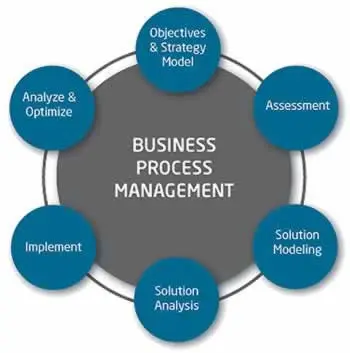In recent years, increased focus is being placed on the achievement of operational excellence in process improvement as a vital step towards the growing of a business.

Of course, the definition of improvement in an operation can vary widely – some organisations will define the term as a lower operating cost or reduced inventory, while others may see it more in terms of increased efficiency or better quality. However, the process of improvement in an organisation generally involves the setting of a goal via management, employees making any necessary changes in their areas to achieve it, then the setting of a new goal by management.
Should all go to plan, continuous improvement should be seen year after year – however, rather than embarking upon a seemingly never-ending journey, with no obvious end-point/destination, companies are starting to implement a new approach – designing the performance of an operation, then ensur¬ing that it performs in accordance with given specifications, with a purpose and end goal clearly in sight.
By setting a clear desti¬nation and signposts along the way, companies can gain a better idea of where they are going – and the destination should clearly be operational excellence; a distinct structure allowing every employee to see the flow of value to the customer – and proactively fix that flow before it breaks down.
Of course, there are many steps to be completed before a company can truly achieve operational excellence. Even after employees have been taught how to adjust the flow to maintain it, it will more than likely break down at some point; the key is to have a plan of action in place for an employee to take, before calling a supervisor/management to get the flow back on track.
Once the delivery of the product or service (i.e. the stage where value is provided to the customer) has been turned over to the employees who work in the flow, organisations need to ensure that they maintain (and improve on) a high level of performance, using continuous improvement tools -this is vital to maintain and support further business growth.
If a flow clearly dictates the task that everyone should be working on next, rather than simply management overseeing, prioritising and guiding employees on what to do, managers can spend more time on activities that grow the business – rather than being weighed down in operational matters – the end result being that an operation can drive overall business growth i.e. increased market share, competitive advantage, and shareholder value.
To summarise, in order for organisations to become (and remain) competitive and successful, they must seek to continuously improve their processes – failure to do so will very likely result in lower revenues, higher costs, fewer satisfied customers and employees who are left feeling unmotivated.
Business Process Management (BPM) is a very powerful business tool – it helps to keep all aspects of operations running optimally. If you want to drive process improvement via operational excellence, we can help you to get there with our range of business process management solutions: http://www.dajon.co.uk/business-process
Get in touch today for an informal chat: http://www.dajon.co.uk/contact-us
Further Reading:
- http://www.business2community.com/strategy/every-company-needs-business-process-management-01136178
- http://www.processexcellencenetwork.com/innovation/articles/the-operations-excellence-due-diligence-unlocking/
- http://ww2.cfo.com/management-accounting/2014/05/company-small-pursue-finance-operations-excellence/
- http://www.zarion.com/insights/blog/room-for-improvement-operational-excellence-in-financial-services
- http://www.industryweek.com/operations/future-operational-excellence-manufacturing
- http://www.slideshare.net/MikeGammage1/you-say-process-excellence-she-says-operational-excellence-23-oct-2013